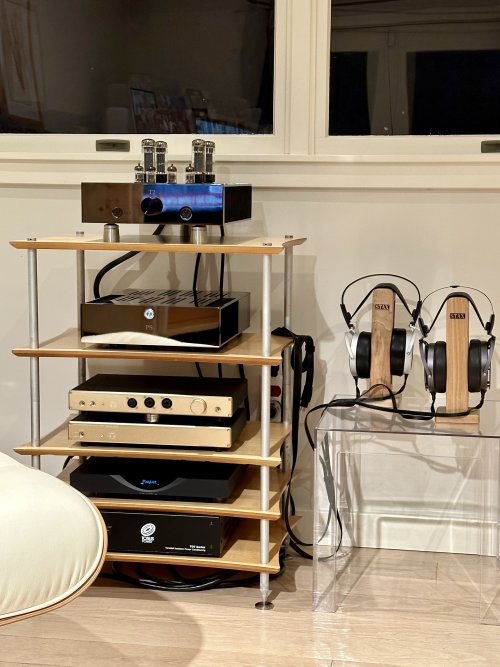- Joined
- Jan 9, 2003
- Posts
- 4,373
- Likes
- 3,157
A T2 build is an undertaking unlike any other amplifier - electrostatic or otherwise. It's an order of magnitude more complex and difficult, even before you get into issues concerning parts obsolescence. There are insanely high internal voltages, plus massive amounts of heat to be dissipated - and the high voltage transistors start to behave very badly if heat isn't dissipated fast enough. A T2's gain factor is also comparable to that of an MC phono stage (1000x gain!!) - and though this bit is not unique to the T2 among e-stat amps, so much gain at & after the small-signal tubes (6922) always makes noise floor a real challenge. Sadly, 6922/6DJ8 types also have a reputation for being fussy and going bad/noisy quite often.
There's good reason there was never (and will never be) an off-the-shelf T2 offering. It can only be done on commission by very skilled & experienced builders, or as a very advanced DIY effort. We are very, very close to not having any commissioned build options for T2, because it is so difficult, costly, and time-consuming.
Here are some prerequisites for those interested in a T2:
There's good reason there was never (and will never be) an off-the-shelf T2 offering. It can only be done on commission by very skilled & experienced builders, or as a very advanced DIY effort. We are very, very close to not having any commissioned build options for T2, because it is so difficult, costly, and time-consuming.
Here are some prerequisites for those interested in a T2:
- You are embarking on a journey. Abandon the usual instant-gratification expectations!
- If you're commissioning one, you need to be flexible on timelines and have good patience.
- You have to expect there is a chance challenges or problems may arise. Though it's not your fault, these can require a significant amount of additional time to resolve.
Last edited:































